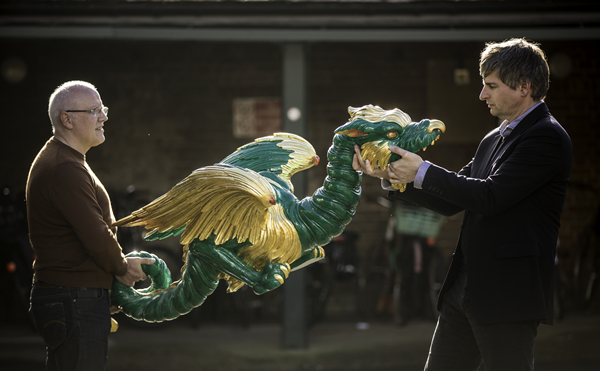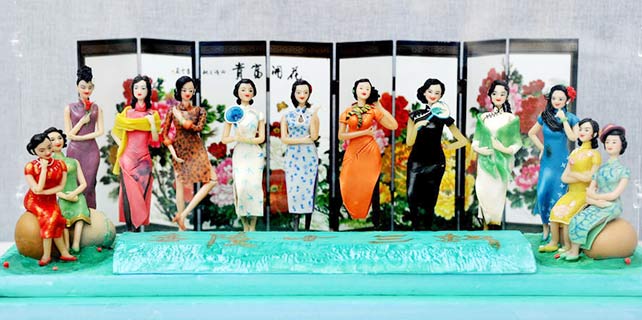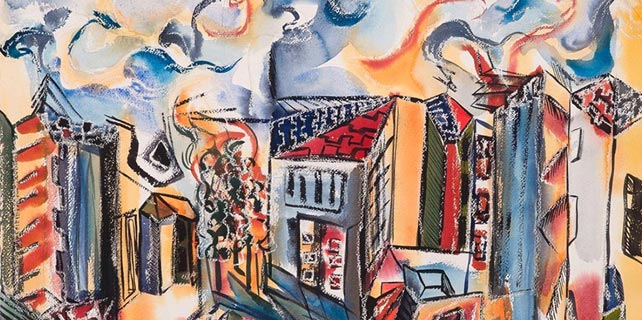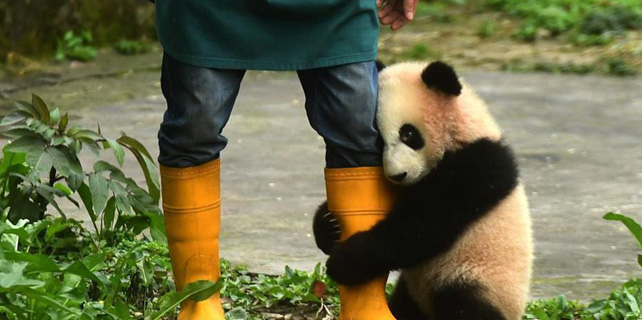Dragons returning to London after 230 years
 |
|
Craig Hatto (right) examines a prototype of the finished dragon. [China Daily] |
Colors
Simultaneously, the team worked on the color for the dragons, collaborating with a specialist in old painting techniques to devise a color scheme to match the descriptions of the fabled beasts, which are said to have been "iridescent".
Selecting the right material for the dragons on the upper section of the building proved time-consuming. "We started off with timber and soon realized that it was too heavy for the building," Hatto said. The team then looked into selective laser-sintering material, a type of durable and lightweight 3-D printing material used in the construction of Formula One cars.
The restoration team collaborated with a number of universities to test the material to see if it would last on the building, according to Hatto. "We undertook a whole raft of research, from testing paints, materials, weight and wind loading. It has also been tested for weather resistance in wind tunnels at Kingston University. All the information that came back suggested that this material was the correct one for the building. Hopefully this will mean our dragons will survive longer than the last ones did," he said.
Eight dragons on the lower section, which are about 2.3 meters high, were carved from African red cedar and painted in the style of the 1700s. None of the remaining 72, rising to the 10th floor and created from SLS material, is longer than 2 meters.
"Using tantalizing contemporary accounts and drawings, and taking inspiration from surviving 18th century dragons in houses and museums, we'll ensure the new dragons are as faithful to the original design as possible," Hatto said.
Ancient wonder
The Porcelain Pagoda of Nanjing, in the former Bao'en Temple or "Temple of Repaid Kindness", was built in the 15th century. Revered as one of seven wonders of the medieval world, it became one of the best-known Chinese cultural artifacts in Western society, thanks to a description in China Memoirs, a book written by the renowned 17th century Dutch traveler, Johan Nieuhof.
The tower quickly became an icon of the city, and Western missionaries reported on its beauty when they returned to their homelands.
Zhou Daoxiang, former curator of the Imperial Examination Museum of China in Nanjing, said the prestige enjoyed by the Porcelain Pagoda was illustrated by its recognition as one of the wonders of the world during the medieval era.
"The Forbidden City in Beijing and the Ming Palace in Nanjing existed at the same time as the Pagoda, but they were not considered to be wonders. This obviously signifies the greatness of the Porcelain Pagoda at the time," Zhou said.
The pagoda was almost destroyed in 1856, during the Taiping Rebellion, but fortunately, the underground palace beneath the temple escaped the rebels' attention and was left intact. In 2008, Buddhist relics were discovered in the underground palace during an archaeological dig.
A replica tower of glass and steel, constructed on the original site, opened to the public in 2015.
Zhou said the ongoing restoration of the Great Pagoda at Kew has added significance now, given the destruction of the original edifice in Nanjing, and the restored tower will offer a new window for people to examine the old-time splendor of the Porcelain Pagoda.
Contact the writers at: liwensha@chinadaily.com.cn and wangmingjie@mail.chinadailyuk.com
Cang Wei in Nanjing contributed to this story.





















